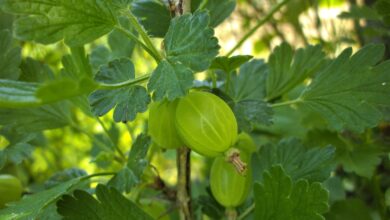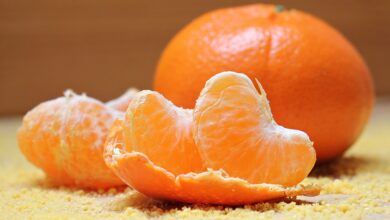Plum: health benefits and Side Effects

The History Of The Appearance Of Plums In Nutrition
Plums belong to the rose family. These trees grow mainly in the northern temperate regions – the plum tree is very resistant to frost. One plant can bear fruit for about 60 years.
There was a plum as a result of crossing cherry plum and blackthorn. This plant was cultivated in the Mediterranean, Central Asia. Gradually, plums spread throughout Europe.
Plums are especially important in the culture of China and Japan. There, this plant is planted, including for beauty. Five plum petals symbolise happiness and its components: well-being, longevity, spiritual purity, good luck and nobility.
In Japan, Ume Matsuri is celebrated since the end of February. Everyone admires the blooming plum trees, hold tea ceremonies. Bulgaria also annually celebrates the day of plums and slivovitz – strong alcohol from this fruit.
Plums are used not only for food – dyes are extracted from leaves and bark, and wood serves as a raw material for creating musical instruments.
Plum Benefits
The calorie content of plums is small due to the large amount of water in the fruits. It has been proven to be a good dietary supplement during weight loss. Flavonoids and phenolic components in plums inhibit the growth of fat cells. If there are plums in moderation, they will speed up the process of fat burning.
Plums are rich in antioxidants, such as anthocyanins, ascorbic acid, carotenoids, vitamin E. Antioxidants reduce oxidative stress by protecting cells from the aggressive effects of free radicals. Scientific studies confirm the link between eating plums and improving memory.
Plums, especially dried fruits, contain a lot of potassium. Plums have been shown to reduce the risk of cardiovascular disease, as potassium is essential for normal heart function.
This fruit serves as an excellent prevention of constipation by gently stimulating peristalsis in a natural way. Pectins and dietary fibre, both soluble and insoluble, help with this.
The Composition And Calorie Content Of Plums
| Calories per 100 grams | 46 kcal |
| Squirrels | 0.7 g |
| Fats | 0.3 g |
| Carbohydrates | 10 g |
Side Effects Plum

“Plums are a low-calorie food product, but the sugar content can fluctuate (therefore, restrictions on their use in diabetes are natural).
Plums contain a lot of organic acids, therefore, with gastritis with high acidity, erosive gastritis and duodenitis, peptic ulcer of the stomach and / or duodenum, it is necessary to avoid plums in the diet. Since plums have a laxative effect, people with a tendency to diarrhoea, a decrease in the enzymatic activity of various parts of the gastrointestinal tract and, accordingly, a violation of food digestion, plums can also be contraindicated even in a minimal amount.
It is important to consider the form in which plums are consumed. To prevent the oxidation of phenols during the drying process, the plums are treated with sulfites. This is how dried prunes are obtained. For people with hypersensitivity to sulfites, such dried fruits can be dangerous, ”warns nutritionist Irina Yakovleva.
The Use Of Plums In Medicine
Plum in fresh, dried form, as well as its decorations, have a laxative effect. With constipation, lazy bowel syndrome, it helps in bowel movements. Also, pectins and dietary fibre improve digestion, serve as a nutrient medium for the intestinal microbiota.
Plum pulp is added to some pharmacy laxatives with a natural composition. Plum bark is also used in homeopathy.
The Use Of Plums In Cooking
Although the plum is a fruit, it is not only used in sweet confectionery and compotes. Sour varieties are great for sauces and roasted meats.
Plum Cake
Plums of the “Hungarian”, “prune” variety are best suited. The finished pie is served warm with a scoop of ice cream.

| Plum | 12 pcs. |
| Sugar | 3/4 st. |
| Butter | 115 g |
| Flour | 1 st. |
| Chicken egg | 2 pcs. |
| dough baking powder | 1 tsp |
| Salt, cinnamon | 1 pinch |
Leave the butter at room temperature until softened. After beat it with sugar, then add eggs and salt, mix thoroughly.
Mix flour with baking powder and add to the egg mixture – stir briefly. Lubricate the baking dish with oil, put all the dough and smooth.
Cut the plums in half and discard the pit. Put on top of the pie – they will cover the dough completely. Sprinkle plums with sugar and cinnamon.
Place the cake in a preheated oven at 180 degrees and bake for 40-45 minutes.
Tkemali
From the specified amount, approximately 1.5 liters of tkemali are obtained. Use sour plums, depending on the variety, the color of the sauce will also differ – brown from green, red from blue. You can use cherry plum or sloe. Greens are best taken fresh.

| Plum | 3 kg |
| Water | 2 tbsp. |
| Dill (flowers and stems, with umbels) | 250 g |
| cilantro | 300 g |
| Mint | 250 g |
| Garlic | 5 cloves |
| Dried red hot pepper | 1-2 pcs. |
| Salt, sugar | taste |
Rinse the plum and pour it straight into the pot. Pour in water and cook over medium heat until soft. Then grind through a sieve to remove the bones.
Add pepper, salt, sugar, dill tied in a bunch to the plum puree. Cook over low heat for another half an hour.
While you can grind the mint and garlic in a blender. Remove puree from heat, discard garlic and pepper. Mix with greens and boil for another 15 minutes.
The sauce is ready. Let it cool and roll it into sterile jars. Store in a dark cool place.
How To Choose And Store A Plum

Plums are very different depending on the variety, it is quite difficult to navigate the colour. After all, there are yellow, red, black plums. If the plum should be yellow, then choose fruits without a green tint. Black plum should not be with red barrels.
The easiest way is to check the variety and taste of plums with the seller, since yellow fruits are sweet, and black ones are sour.
Pay attention to the peel – it should not have cracks and dents. If a wax coating is preserved, this is good, which means that the plums were recently harvested.
The ripe fruit is quite elastic, but not too soft – such a plum is already overripe and may have begun to ferment. The stalk of a ripe fruit is dry, it may fall off by itself.
Plums should be stored in polyethylene with holes to remove moisture in the refrigerator. Ripe fruits will lie for a maximum of a month.




